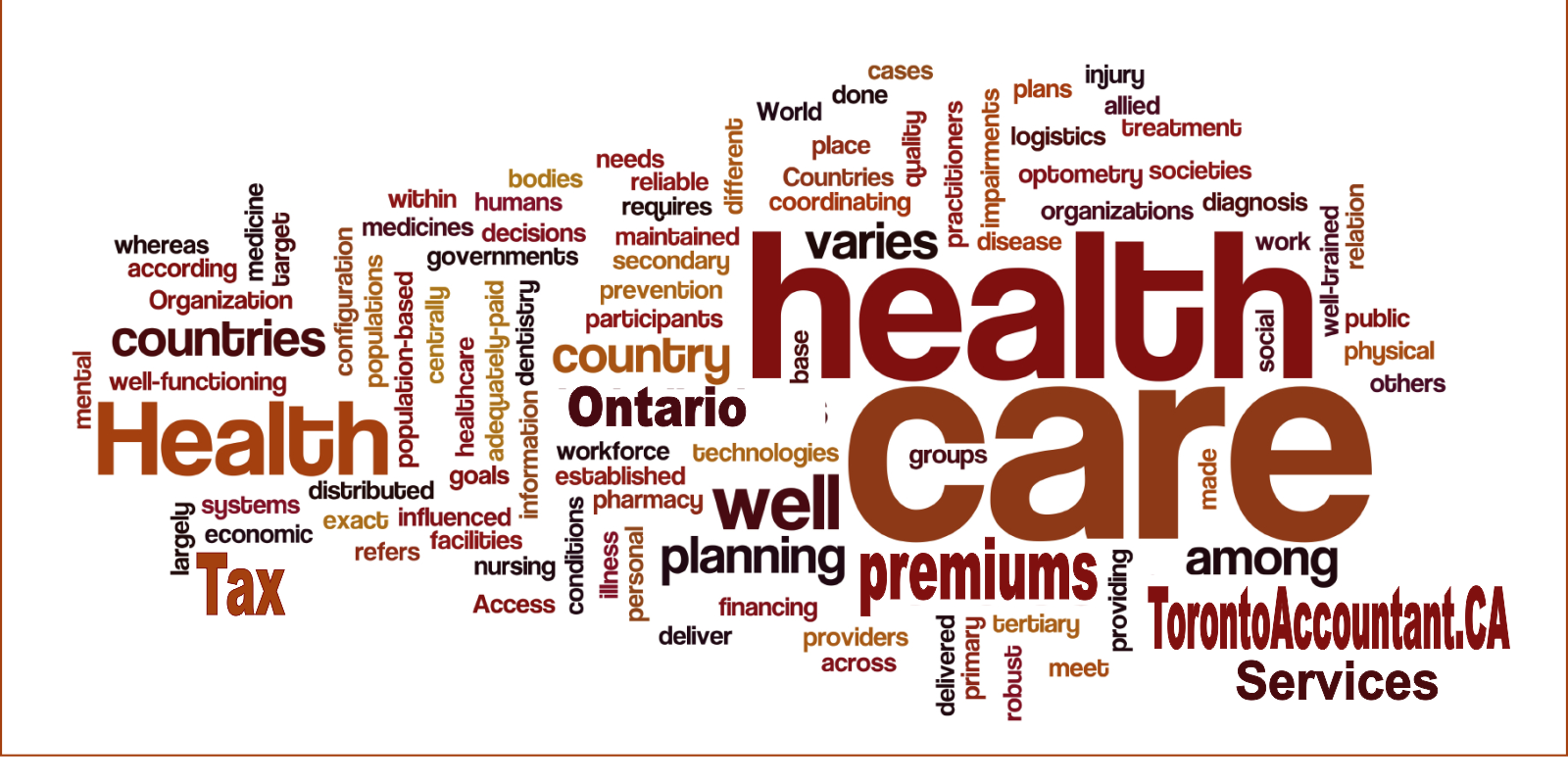Most of us feel really fortunate about being able to enjoy the health care system in Canada. Although, over the past few years many of us are recognizing that we are having to pay for some health care services that we didn’t have to be concerned about in the past. These are usually the add on services, and interestingly enough they not only vary from province to province, but also from region to region within the provinces.
At one time this type of payment would equate to the old health insurance premium plan. (OHIP),but this has now been replaced with this health care premium. Typically for those who are earning employment income the amount owed for the premium is based on personal income, and an individual could end up paying up to $900. for the year.
For the general tax payer we have just accepted this as another payment that we have to be responsible for, but in the work sector there is quite a controversy that surrounds it. Many of the unions want the cost of this premium to be picked up by the employer, and will try to include this in its negotiations.
Perhaps the word “premium” is meant to take the sting out of another chunk of money being taking out of earned income, but it really is a “tax”. In the income tax act it is defined as a tax collected, and if you don’t pay it, then it subjected to the same penalties and interest that your regular tax would be. However, this premium cannot affect your quality or eligibility for health care.
The amount of the premiums are set on the taxable income for the year, so it has an effect on others earning income aside from employment income. This is one of the stumbling blocks that employers who are willing to pay the premium face, because the amount owed includes more than figuring out just the employment income.
While the majority of us really want to protect our standard of health care we know this costs money, and really don’t mind having to contribute towards it out of our own pockets, with some expectations however. The Government promotes the use of this premium collection is to be used to fund our healthcare system, but the pitfall to this is that the funds go right into the general government revenue so there are no guarantees that all that is being collected is going directly to health care benefits. This can be somewhat tracked through the Bill 106 legislature that dictates the government must provide annual reports as to what use the revenue is being put to.
So, let’s take a trip back down memory lane and look at some of the hype and selling features the government churned out to convince the Canada tax payer that the Provincial Health Premium was a good thing: Keep in mind this premium came into effect as of 2004, so we have had 10 years of experiencing it and to compare it to the great benefits it was supposed to provide:
The government of course came out with a long list of how this was truly going to help the health care in Ontario.
Some of the major boosts were supped to be seen in…
The reduction in wait times for cancer, cataract, MRI/CT and joint replacement services. Plus the promise included funding for an additional 9,000 cataract surgeries every year, and by 2005-2006 we could expect to see nine new MRI/CT places for services.
Cardiac procedures were expected to increase yearly by 36,000
There would be 2,340 joint replacements added to the roster
Organ transplants would increase by 425
By 2007/08 dialysis treatments would expand by 529,000
It will take a fair amount of work to do the comparisons on what was promised regarding these figures and what actually occurred, but we will certainly be up to the challenge throughout the year to take a closer look at these. However, if any of these directly have affected you or your loved ones you are going to be the best judge as to whether the promises have been met with the Ontario Health premiums.



